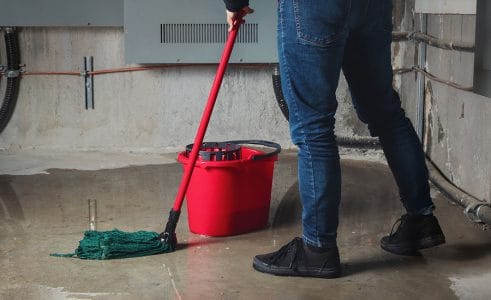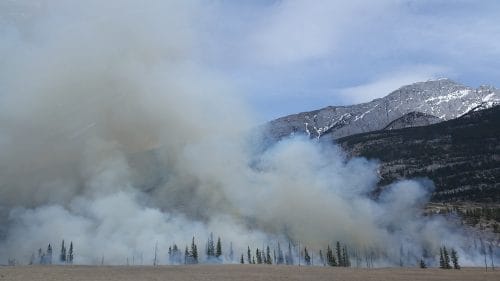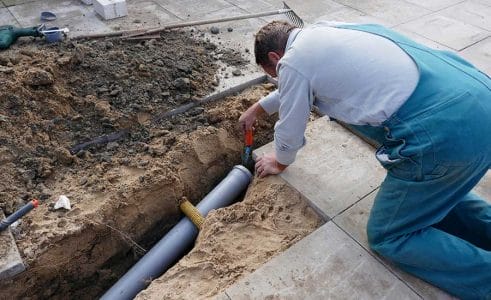When Is Mold Remediation Required? Warning Signs & Prevention
Did you know that mold affects over 50% of homes in the U.S., causing structural damage and potential health risks?
Left untreated, mold can spread in as little as 48 hours, turning a minor issue into a major problem.
In this guide, we’ll cover everything you need to know about mold damage and mold remediation, including warning signs, when it’s required, how it’s done, and the steps you can take to protect your home and loved ones from future outbreaks.
What Are the 10 Warning Signs of Mold Toxicity?
Mold toxicity can manifest in several ways, and common warning signs include:
- Persistent respiratory issues, such as coughing or wheezing
- Chronic sinus infections or nasal congestion
- Frequent headaches or migraines
- Skin rashes or irritation
- Unexplained fatigue or dizziness
- Eye irritation, including redness or watery eyes
- Increased sensitivity to allergens
- Brain fog or difficulty concentrating
- Asthma flare-ups or newly developed asthma
- Recurring cold or flu-like symptoms
If these symptoms seem to improve when you’re away from the affected area (like your home or office), it might be a sign that mold is present and affecting the indoor environment. That’s why it’s a good idea to address the potential mold problem with professional remediation — before it worsens or causes ongoing issues.
What Is Mold Remediation?
Mold remediation includes identifying, containing, removing, and preventing the growth of mold in a property.
Unlike simple cleaning, mold removal and remediation focuses on addressing the root cause of mold growth and restoring affected areas to safe and healthy conditions.
Mold thrives in damp environments, and if left unchecked, it can damage property structures and pose serious health risks.
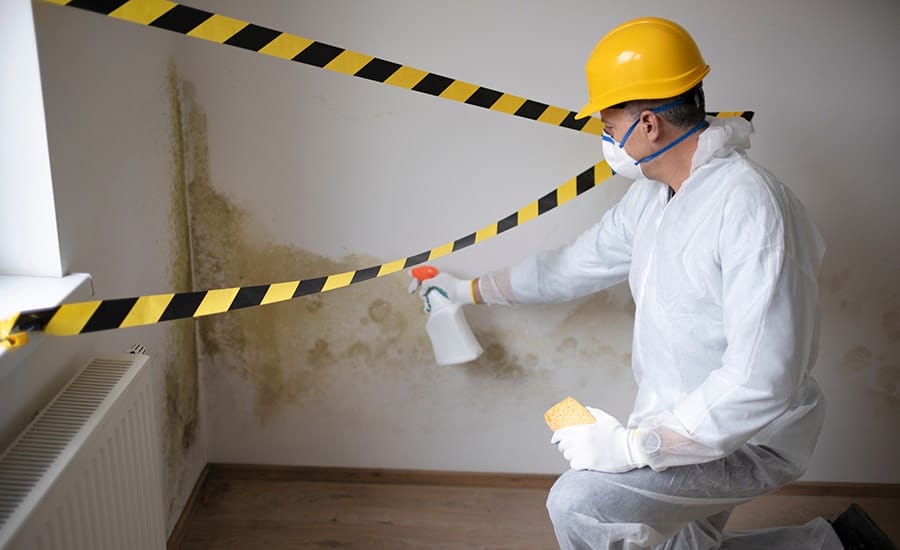
When Is Mold Remediation Required?
Mold remediation is essential when mold growth begins to impact the safety, structure, or health of your home or business.
You most likely require mold remediation if you:
1. See Visible Signs of Mold Growth
Visible mold is one of the clearest indicators that remediation is necessary. Mold often appears as dark spots or discoloration on walls, ceilings, or floors. Common areas include bathrooms, basements, and kitchens where moisture levels are high.
Tip: If you notice mold covering an area larger than 10 square feet, the EPA recommends calling in a professional remediation service.
2. Detect Hidden Mold in Walls, Ceilings, and Floors
Mold isn’t always easy to spot. Hidden mold can develop behind walls, under flooring, or inside HVAC systems, especially after water damage.
Signs of hidden mold include persistent musty odors, bubbling paint, or warped materials.
Tip: Use a moisture meter to detect damp areas in your property that may harbor hidden mold. Studies show that 40% of buildings have damp conditions that can lead to mold growth.
3. Recognize Health Symptoms That May Indicate Mold Exposure
Exposure to mold can cause a range of health issues, including allergic reactions, respiratory problems, and skin irritation. Symptoms such as coughing, sneezing, watery eyes, or unexplained fatigue could indicate mold in your environment.
Tip: If multiple individuals in your home or workplace experience similar symptoms, it’s time to check for the presence of mold.
4. Spot Situations That Require Immediate Professional Assistance
Certain situations demand immediate professional intervention, such as:
- After flooding or water damage: Mold can start growing within 24-48 hours of water exposure.
- In cases of sewage backups: These events introduce harmful bacteria and increase the risk of mold growth.
- If mold spreads rapidly: Large infestations can compromise structural integrity and indoor air quality.
Tip: Acting quickly after water damage is crucial as the CDC highlights that prompt drying and repair can reduce the likelihood of mold growth by 70%.
How Is Mold Remediation Done?
Mold remediation involves a systematic process to safely remove mold and prevent its return:
- Inspection and assessment: Professionals assess the extent of mold growth and identify the source of moisture fueling it.
- Containment: Affected areas are sealed off to prevent mold spores from spreading during the cleanup.
- Air filtration: Specialized equipment like HEPA air scrubbers is used to capture airborne spores.
- Mold removal: Contaminated materials, such as drywall or carpets, are safely removed or cleaned using EPA-approved products.
- Drying and dehumidification: Industrial-grade equipment removes residual moisture to prevent regrowth.
- Repairs and restoration: Damaged areas are repaired, and mold-resistant materials may be installed for added protection.
Preventing Mold Growth After Remediation
After mold remediation, taking proactive steps to prevent future growth is essential to maintaining a healthy and safe environment.
To protect your property and keep mold from returning you should:
1. Manage Indoor Humidity Levels
Excess moisture is the primary cause of mold growth. Keeping indoor humidity levels below 50% is a key step in prevention. Use dehumidifiers, particularly in basements and bathrooms, to control dampness.
Tip: Invest in a hygrometer to monitor humidity levels regularly and adjust as needed.
2. Inspect Regularly for Moisture Leaks
Leaks from pipes, roofs, or appliances often go unnoticed until they create a mold-friendly environment. Routine inspections can help you catch and address issues early.
Tip: Schedule seasonal maintenance to check for leaks in plumbing, roofing, and windows. A small leak can introduce up to 20 gallons of water per day, leading to hidden mold.
3. Improve Ventilation in High-Risk Areas
Poor airflow in areas like bathrooms, kitchens, and laundry rooms can trap moisture and lead to mold growth. Proper ventilation ensures these spaces stay dry.
Tip: Install exhaust fans in high-moisture areas and run them during and after activities like showering or cooking. Ensure vents direct air outside, not into attics or crawl spaces.
4. Choose Mold-Resistant Materials for Repairs
When repairing areas affected by mold, opting for mold-resistant materials can help prevent recurrence. Mold-resistant drywall, paints, and insulation are designed to withstand moisture and discourage mold growth.
Tip: Consider upgrading waterproofing solutions like sealants and membranes in areas prone to dampness, such as basements and foundations.
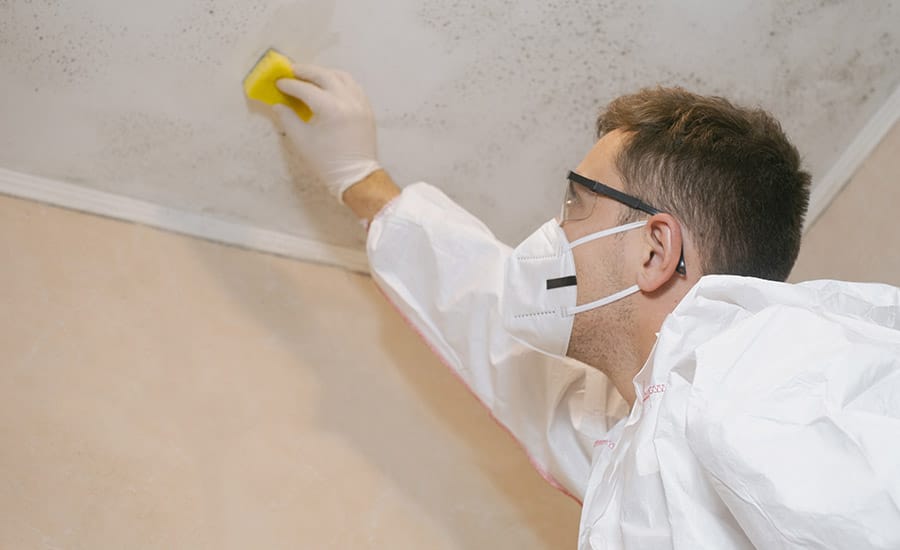
Trust BELFOR for Professional Mold Remediation Services
At BELFOR, we know that mold remediation requires urgency, precision, and care to protect your home or business. Our expert services are designed to eliminate mold safely, effectively, and with minimal disruption to your daily life.
With decades of experience, cutting-edge technology, and a customer-first approach, we make mold remediation a seamless and stress-free process.
Here’s what you can expect from BELFOR:
- 24/7 emergency response: Our teams are ready to act anytime, ensuring quick containment and reducing further damage.
- Comprehensive remediation solutions: From mold removal and treatment to structural repairs and preventive measures, we handle every step of the process.
- Certified professionals: Our technicians are trained in the latest industry standards and use advanced techniques to restore your property.
- Health-first approach: We prioritize eliminating mold and restoring air quality to create a safe, healthy environment.
- Insurance assistance: We work with you to document mold-related damage and navigate the insurance claims process with ease.
- Proactive prevention: Our experts provide tailored recommendations to help protect your property from future mold infestations.
With BELFOR, you’re not just removing mold — you’re safeguarding your property and peace of mind. Contact us today to learn how our trusted mold remediation services can help protect your home or business. We’re here and ready to help!
FAQs About Mold Remediation
If we haven’t answered all your questions about mold remediation, here are answers to some common ones.
When should you do mold remediation?
Mold remediation should be done as soon as you detect visible mold or suspect hidden mold growth.
Delays in addressing the issue can lead to structural damage, health risks, and increased remediation costs. If you notice a musty odor, water damage, or experience allergy-like symptoms, it’s time to act.
What level of mold requires remediation?
Mold remediation is typically required for any visible mold growth, especially when it covers an area larger than 10 square feet.
Even smaller infestations in high-risk areas like HVAC systems, behind walls, or under flooring warrant immediate attention to prevent further spread and health risks.
When should you walk away from a house with mold?
You should consider walking away from a house with mold if the infestation is extensive, especially if it impacts the foundation or structural integrity, or if remediation costs exceed your budget.
Mold caused by long-term neglect or recurring water damage may signal deeper, unresolved issues.
.jpg)
